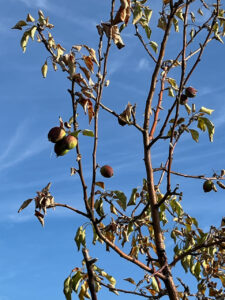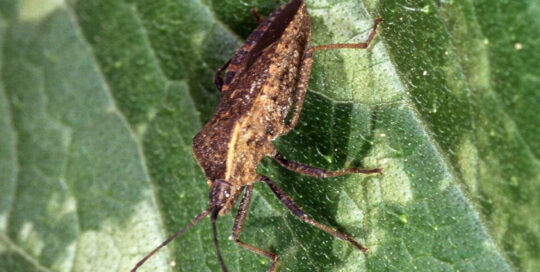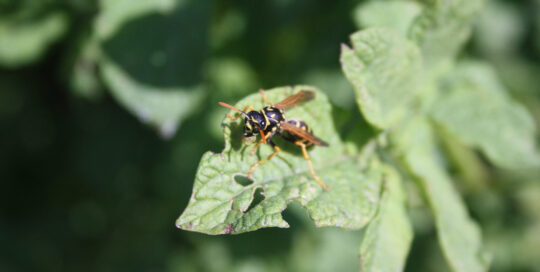How to Properly Water Fruit Trees During Hot, Dry Weather
Views: 530

Extreme heat is the prominent headline for the summer, and it can take its toll on even established fruit trees. It’s important to know how to properly water fruit trees when summer heat and little rain are the norm.
Bare Root Trees: An Economical Way to Enhance a Lot
Should Have Watered Earlier
We were blessed with higher than normal precipitation amounts this spring, but have been lax with watering some of the fruit trees. Part of the reason is because of the frequent rains, but another is due to our hose-eating dog. Zeke has chewed so many hoses that we have to keep them out of the backyard. The other day, he grabbed the sprinkler as it was running and ran around the yard. As we speak, he’s been inside for hours as I desperately try to deep water my herb garden and fruiting shrubs.
But I digress. Because some areas have been neglected, one of my apple trees is suffering from the recent hot, dry conditions. With conditions like this, trees lose up to 90 percent of their water through their leaves due to transpiration. The trick to bringing them through dry spells is to mitigate this process.
When to Water Fruit Trees
Sometimes it’s hard to tell the difference between a tree that’s been watered too much and one that is too dry. If you are unsure whether your tree really needs water, use a small shovel and dig roughly 6 inches deep into the ground around the dripline, which is the edge of the canopy of the tree. If it is dry, you need to water.
As with pretty much every other plant during this time of the year, water in the cooler parts of the day. And it’s completely acceptable to water in the evening. The goal is to saturate the ground below the canopy because this is where so many of the roots are located to capture the moisture.
How Much Water do Fruit Trees Need?
Because water availability is different with various soils, one of the best ways to start is to measure what is actually given to the tree. Place your sprinkler so it will saturate underneath the canopy. You don’t have to worry about watering close to the trunk because that is not where the bulk of the routes are located. Please a couple of pipe plates, or even a empty tunafish can with in this region. And water until it is filled an inch deep. On average fruit trees should receive roughly an inch of water a week.
A couple of hours after watering, take a small shovel and dig into the soil and see how deep the water actually reached. If everything looks saturated, you are good. If it’s still dry, water again. This will give you a baseline on what to provide each week.
How Often to Water?
It’s also a good idea when you’re experimenting to see how much you need to check a few days after watering. Sandy or rocky soils tend to train quickly so they might try out faster. If the soil feels nice and cool, and there is still moisture several inches below the surface when you dig a small hole, you know that you are on the right track. If it’s not, water again.
Ideally, it is best for the tret if you water deeply once a week, but this isn’t always possible, particularly if your soil drains quickly. In this case, you might want to water deeply twice a week. Most importantly, don’t water briefly and frequently.
Mulch Fruit Trees to Save Water
If your region is typically hot and dry, one way to help reduce evaporation from the ground is to mulch the soil. To properly mulch a tree, clear away any weeds within 12 inches of the trunk, then begin the layer of bark chips or other organic material, extending to the edge of the canopy. Make the layer of mulch roughly 3 inches deep. This way moisture can penetrate the soil, yet it reduces evaporation.
Most trees can weather a hot and dry without difficulty. If your trees are struggling, be more consistent with your watering schedule and mulch to preserve what you are giving them.
Meet Amy Grisak
Amy is a freelance author and photographer in Great Falls, MT who specializes in gardening, foods, and sustainable agriculture. She provides information on every kind…
Amy's Recent Posts

Squish Squash Bugs Before They’re a Problem








